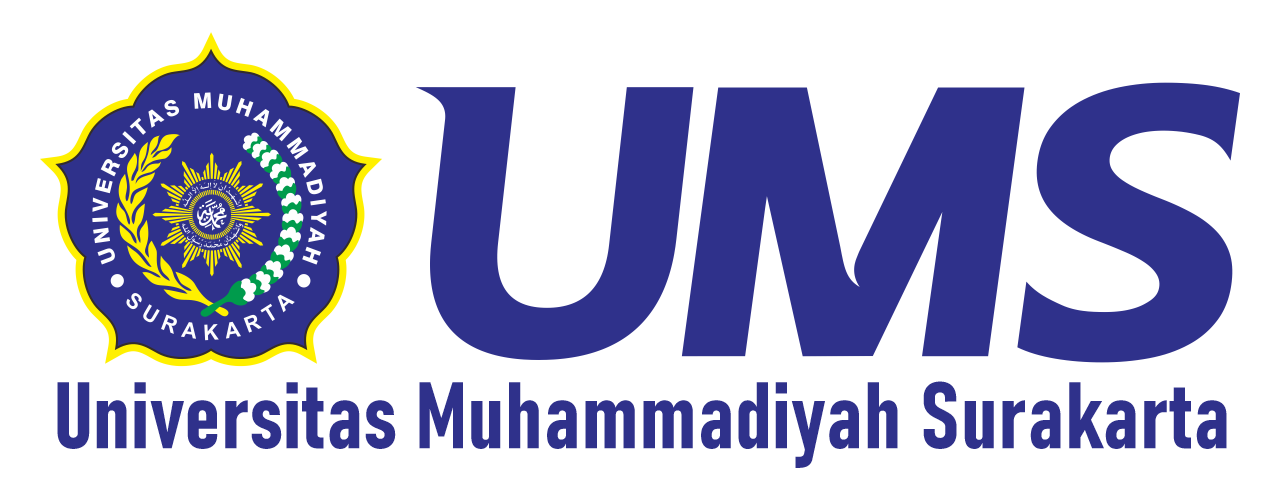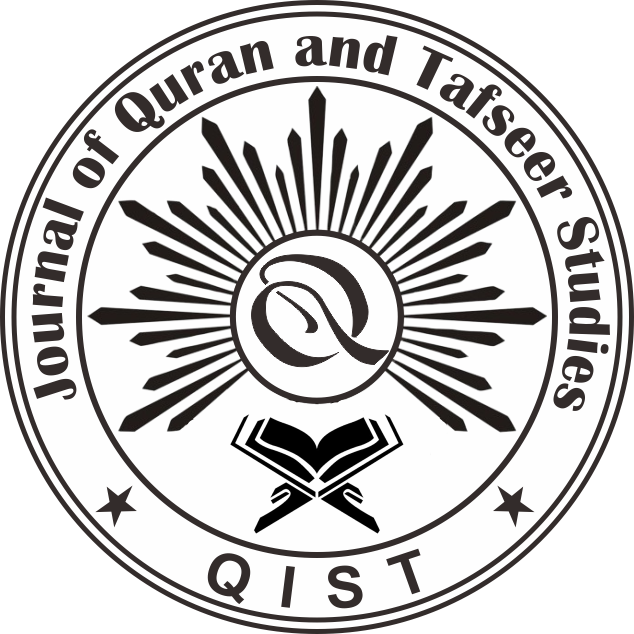I'jaz in the Qur'an through the Use of the Word Bayt to Designate the Ka'aba Before its Rebuilt by Quraysh: Lessons for the Revivification of the Awqaf Knowledge
DOI:
https://doi.org/10.23917/qist.v4i2.8430Keywords:
I'jaz, Bayt, Ka'aba, Waqf, Rizq, Ma'ash, 'UmranAbstract
The aim of the research is to highlight the inimitability of the Qur'an through the use of the word Bayt, over a long period, to designate what has become known as Ka'aba. Initially, the building had a rectangular shape, with a semi-circular shape on the north side, since Ibrahim had rebuilt it with the help of his son Isma'il. The cubic shape dates back to five years before the advent of Islam when Quraysh had rebuilt it after it was partly destroyed by a torrential rain. Hence the name Ka'aba which means cube in Arabic. This explains why the use of the word bayt in the Qur'an, under different forms, is more than five times greater than that of Ka'aba. This i'jaz of the Qur'an in the judicious choice of words that accord with proven historical facts is paramount in the Revivification of the Awqaf Knowledge. The word Bayt refers to the House of Allah as a Habs, that is, something that remains under the Mulk (Sovereignty) of Allah. This is the case by extension for any place of worship as al-Bukhari mentions through one of his titles in his Collection of Authentic Ahadith. In this regard, the word Bayt is deeper than that of Ka'aba, because it contains strata of meaning that are not found through the word Ka'aba, and allows, consequently, to link things that the word Ka'aba does not allow, by immersing us in the deep history of humanity in its innate state which pushes to sincerity of worship for Allah. Thus, in terms of the organization of life, in the beginning was the Rizq of Allah, which generated the building of the Bayt as a Habs, then came the Ma'ash to provide for those who visit it to worship Allah, and the 'Umran following the grouping of people to dwell around the House of Allah.
References
[1] W. X. Zhao et al., "A Survey of Large Language Models," arXiv logo, 13 Oct 2024 (v15), arXiv:2303.18223
[2] L. Barrault et al., "Large Concept Models: Language Modeling in a Sentence Representation Space", arXiv logo, 15 Dec 2024 (v2), arXiv:2412.08821
[3] A. Behrouz et al. " Titans: Learning to Memorize at Test Time." arXiv logo, 31 Dec 2024 (v2), arXiv:2501.00663
[4] A. Belabes, "The Grothendieck's Toposes as the Future Mathematics of AI." Philosophy International Journal, vol. 7, no. 3, 2024, pp. 1-8.
[5] A. Belabes, "Habs as Common Living Heritage: Beyond the Cash Waqf as Deep Financial Innovation." Asy-Syari'ah, vol. 27, no. 1, 2025, pp. 1-20.
[6] A. Belabes, "Conceptualizing money creation as a habs in debt market." Journal of Islamic Economics Lariba, vol. 10, no. 2, 2024, pp. 839-854.
[7] A. Belabes, "The Quadriptych of Rizq, Habs, Ma'ash, and 'Umran: Insights from Hajar's Statement on Water Rights." Invest Journal of Sharia & Economic Law, vol. 5, no. 1, 2025, pp. 90-108.
[8] A. Al-Bukharī, Ṣaḥīḥ al-Bukharī. Beirut: al-Maktaba al-Asriya, 2002.
[9] A. Al-Jurjanī, Dalail al-I'jaz. Cairo: Sharikat al-Quds, 2022.
[10] M. Al-Azraqī, Akhbar Makkah wa ma Jaa fīha min Athar. Makkah: Maktabat al-Asadi, 2012.
[11] A. Belabes, "The forgotten history of the waqf: The Ka'aba." Islamic History and Literature, vol. 4, no. 3, 2024, pp. 137-149.
[12] Arabic Language Academy in Sharjah, "Bayt." In Al-Mu'jam al-Tarikhi li-al-Lugha al-'Arabiyah, 2025, https://www.almojam.org/root?id=1948&wordId=11273
[13] R. Martin, Financialization of Daily Life. Philadephia, PA: Temple University Press, 2002.
[14] M. Al-Bukharī, Saḥīḥ al-Bukharī. Beirut: al-Maktaba al-Asriya, 2002.
[15] A. Ibn Hisham, Al-Sīrah al-Nabawiyah. Beirut: Dar al-Kitab al-Arabi, 1990, pp. 218-225.
[16] A. Belabes, "Le waqf comme héritage commun de l'humanité," Awqaf Journal, vol. 39, 2020, pp. 16-29.
[17] T. Ibn Taymiyah, Majmū'at al-Fatawa. Al-Mansurah: Dar al-Wafa, 2005, vol. 31, p. 134.
[18] H. al-Ra'y, Hilal. 2014. Aḥkam al-Waqf, Sharjah: Dar al-Fawaid.
[19] A. Al-Khassaf, Aḥkam al-Awqaf wa al-Ṣadaqat. Beirut: Muasasat al-Risalah, 2017.
[20] I. Al-Tarabulsī, Al-Is'af fī Aḥkam al-Awqaf. Makkah, Beirut: al-Maktaba al-Makiyah, Muasasat al-Rayan, 2015.
[21] A. Belabes, "Ma'alim Manhajiyah li-Dhabt Istikhdam Mafhūm al-Waqf fī al-Tamwīl wa al-Istithmar." In al-Tamwīl wa al-Itithmar fī al-Awqaf, edited by Hichem Hamza, Jeddah: The Scientific Publishing Center, King Abdulaziz University, 2019, pp. 1-44.
[22] M. Zarqa, Aḥkam al-Awqaf. Damascus: Matba'at al-Jami'a al-Suriya, 1947.
[23] M. Abu Zahra, Muḥazarat fī al-Waqf. Cairo: Dar al-Fikr al-Arabi, 1972.
[24] M. Al-Kubaisi, Aḥkam al-Waqf fī al-Shari'ah al-Islamīyah. Baghdad: Matba'at al-Irshad, 1977.
[25] P. Charbonnat, "Formation et phylogénie des concepts de 'marché' dans l'économie politique au XVe siècle," Revue de la régulation, 2014, vol. 16.
[26] F. Bédarida, "Phénomène national et État-nation d'hier à aujourd'hui," Vingtième Siècle. Revue d'histoire, 1996, vol. 50, pp. 4-12.
[27] F. Locher, "La propriété privée n'a absolument rien de naturel." CNRS le Journal, 9 September 2020.
[28] C. Dyer, "Conflict in the landscape: the enclosure movement in England, 1220-1349, Landscape History, 2006, vol. 28, pp. 21-33.
[29] Code Napoléon. Paris: Imprimerie impériale, 1807, p. 142.
[30] M. Al-Albani, Ṣaḥīḥ al-Jami', Beirut: Al-Maktab al-Islami, 1988, p. 336.
[31] A. Belabes, "al-Iqtiṣad al-Islamī: Hafriyat Muṣtalaḥ," Islamiyat al-Ma'arifa, 2014, vol. 20, no. 78, pp. 105-132.
[32] A. Belabes, "Mustalaḥ al-Iqtiṣad al-Siyasī fī al-'Ālam al-Islamī: Dirasah Muqaranah Bayn al-Adabiyat al-'Arabiyah wa al-Turkiyah wa al-Urdiyah," Islamiyat al-Ma'arifa, 2017, vol. 22, no. 88, pp. 79-112.
[33] A. Ibn Hazm, al-Muḥalla bi-al-Athar. Beirut: Dar al-Kutub al-Ilmiya, 2002, vol. 8, p. 154.
[34] M. Al-Muti'ī, Nizam al-Waqf wa al-Istidlal 'Alayh. Kuwait: al-Wa'i al-Islami, 2013, p. 37.
[35] A. Al-Wansharīssī, "Nawazil al-Aḥbas." In Al-Mi'yar al-Mu'arab wa al-Jami' al-Mughrib 'an Fatawa Ahl Ifriqiya wa al-Andalus wa al-Maghrib. Beirut: Dar al-Gharb al-Islami, 1981, vol. 7, p. 5.
[36] T. Piketty, Capital and Ideology. Cambridge, Mass: Harvard University Press, 2020.
Downloads
Submitted
Accepted
Published
How to Cite
Issue
Section
License
Copyright (c) 2025 Abderrazak Said Belabes

This work is licensed under a Creative Commons Attribution 4.0 International License.
















